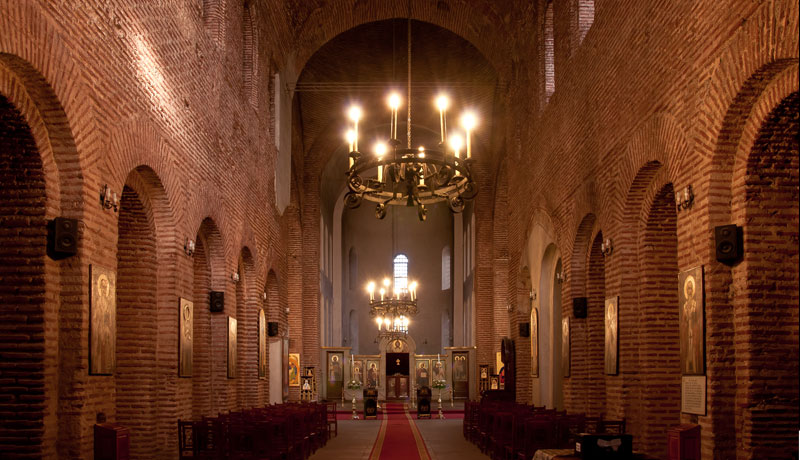CONSTANTINE’S VISION
Friday, April 11
Lecture Constantine the Great, Founder of the Christian Roman Empire
In 330 AD, the Emperor Constantine made Byzantium his capital and renamed it Constantinople. He considered his domain, which we now call the Byzantine Empire, as the true inheritor of the Roman mantle. In time, his empire became both an ally and rival of western Europe. Kenneth Harl (Tulane University) will explain the motives behind Constantine’s conversion to Christianity, his vision of an imperial church, and his development of Byzantine civil institutions and of Constantinople as the capital of Christianity.
Performance Byzantine Chant St. Gregory of Nyssa’s Choir, led by Sanford Dole
THE AGE OF JUSTINIAN: TRIUMPH AND TRANSFORMATION
Saturday, April 12
Lecture The Emperor Who Never Slept: Justinian I and the Challenges and Contradictions of his Reign
Justinian I ( r. 527-565) attempted to restore the Roman empire to its earlier glory. His many accomplishments included the reconquest of North Africa, Italy, and parts of Spain; preparation of the Corpus Iuris Civilis — perhaps Byzantium’s greatest legacy to the west; the construction of stunning architectural monuments; and his enlargement of the imperial role in determining church doctrine. All of these successes came at a cost. Michael Maas (Rice University) will examine the impulses that drove Justinian as well as the economic and social forces that limited his triumphs, showing why his reign marked a watershed in the development of European civilization.
Lecture Literature and Patronage in the Age of Justinian
The sixth century left a rich legacy not only in the great art and architecture it produced but also in its works of literature. Claudia Rapp (UCLA) will consider the most important authors of Justinian’s time, beginning with the enigmatic Procopius, whose Secret History was both an official history of the Emperor’s wars and a diatribe against the imperial court. These authors operated in a unique social context, which helps to explain the proliferation of literature during this era. Patronage tied authors to aristocratic benefactors and to the imperial court, while ties of friendship and collegiality strengthened the bonds among the literati themselves.
Performance The Works of Procopius and Boethius
A reading by Peter Donat.
Lecture Hagia Sophia in Constantinople: Architecture of Power and Transcendence
Byzantium’s greatest monument, the church of Hagia Sophia in Constantinople, is most often discussed in terms of its unique structure, which encloses the largest vaulted space of antiquity. Built by Justinian in 532-537, Hagia Sophia served both as a symbol of earthly power and a spiritual link to heaven. These two functions combined whenever the building served as a ceremonial space, housing the rituals which guaranteed order in the well-governed Christian cosmos. Robert Ousterhout (University of Illinois Urbana-Champaign) will explore the unique artistic and engineering achievement that is Hagia Sophia, as well as its religious and civic use.
Lecture Art on the Imperial Borders from Ravenna to Sinai
Justinian’s ambitions are reflected in the monuments he built on the borders of the empire. Helen Evans (Metropolitan Museum of Art) will showcase the superb mosaic decorations that survive from the Church of San Vitale in Ravenna, his western capital. She will then lead us through the church of the Holy Monastery of St. Catherine at Sinai in Egypt, a fortified monastery at the eastern edge of the Empire’s territories that demonstrated to the populace the power of the empire and the faith that protected it.
Panel Discussion
All lecturers join in a moderated discussion.
Presenters
John Michael Boyer, music, cantor, Annunciation Cathedral
Sanford Dole, music director, Sanford Dole Ensemble
Peter Donat, actor
Helen Evans, Curator, Medieval Art, Metropolitan Museum Art
Kenneth Harl, History, Tulane University
Michael Maas, History, Rice University
Kathleen Maxwell, Art History, Santa Clara University
Robert Ousterhout, Architectural History, U Illinois Urbana
Claudia Rapp, Late Antiquity, UCLA
